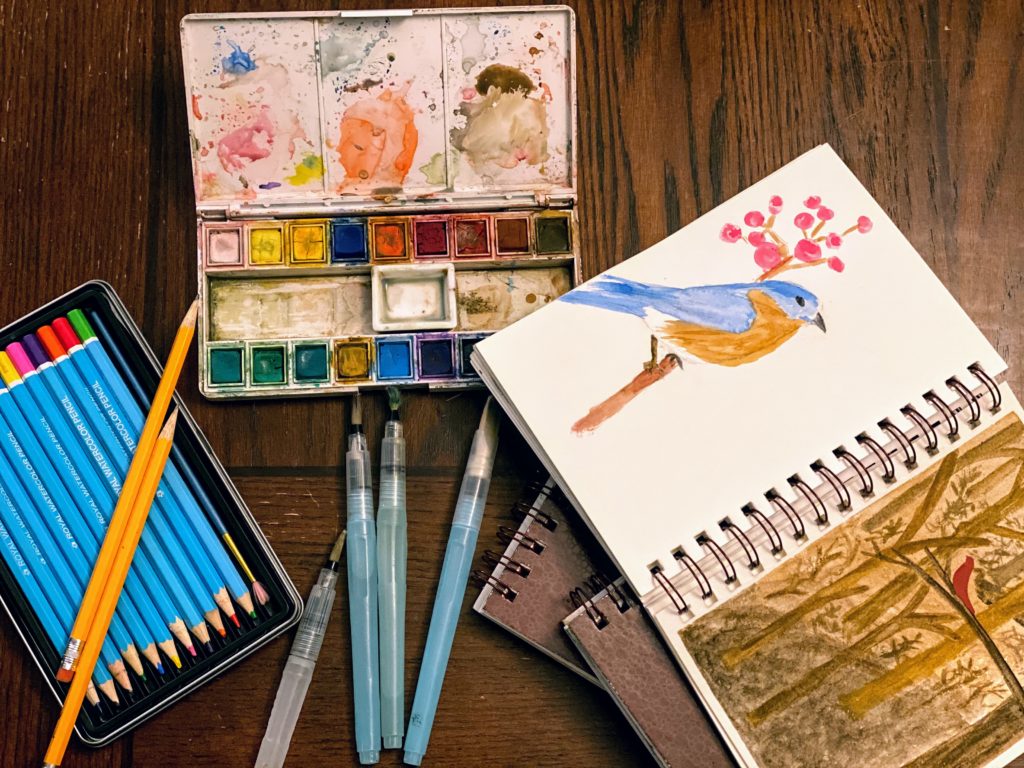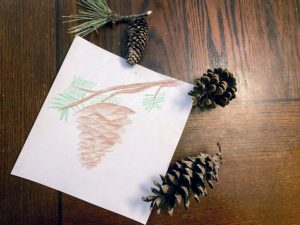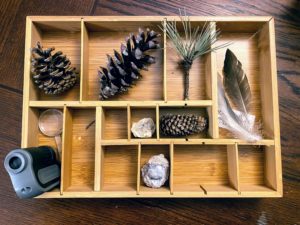Nature journaling can seem intimidating, especially when you really want to do it but the kids seem uninterested. There is nothing like having to give 110% in planning and dish out all the enthusiasm just to have your kids whine and groan when you declare that you will be nature journaling! 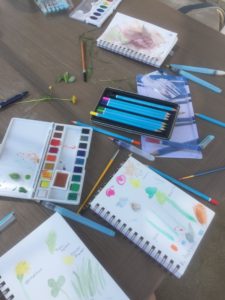
Most of the time, if I run into too much resistance I just scrap whatever is causing the pain and we move on. That’s the beauty of homeschool, right? But some things are just too important to toss aside and nature journaling is one of those things to me.
Here are some benefits of nature journaling:
-it can be done at any grade level
-it is a cross discipline practice; art, science, language arts
-it creates stronger connections in the brain as the journaler experiences sight, sound, touch, and smell as they are observing in the field and record their findings
-it helps kids feel connected to nature
-through observation, they learn why and how some things happen
-you end up with beautiful journals full of memories
-it a great family or group activity
There are so many ways you can begin this practice. Start slow (unless everyone is on board, full throttle ahead!).
Here are some starting points:
-Start with a phenology wheel
-collect nature items and bring them indoors for study and journaling
-bring supplies with you, keep a set in the car
-watch “how to” videos to help learn nature drawing
-bring nature journals to places like a zoo or aquarium
-set a goal like “find a flower you want to add to your journal” if your child is too overwhelmed by the infinite choices
-journal with your kids (or in front of your kids as they grumpily refuse. After so many minutes of waiting, most will join in)
-only schedule one or two journaling days each month. Any other time the journal comes out will be a bonus.
-do a monthly nature journaling session in your back yard. Even the smallest yard have bugs, some type of plant, or a view of birds
So, how do we implement this practice if we aren’t naturally art-sy or even outdoor-sy people?
If stopping in the middle of a forest to make a drawing doesn’t sound like a great time, opt for places like your yard, a zoo, the beach, or simply bring in items collected from a park or other outdoor space and make your observations about those items in the comfort of your home.
What supplies do I need?
At a minimum, you simply need a piece of paper and a pencil. Depending on which type of nature journal you want to keep and whether each child carries their own supplies or not, your nature journaling supplies will vary.
Keeping the supply list simple is best for field work. I prefer to work with watercolor, so my supply list looks like this: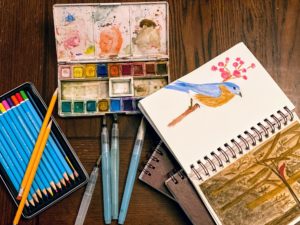
– small watercolor notebook, hard cover (for stability when I’m drawing)
– a large and fine watercolor brush, filled with water (I like these)
– colored pencils
Extras that can be nice to have:
-binoculars
-hand-held field microscope
-Magnifying glass
-small field guide for plants, bugs, and/or animals in your area
-bug containers
-tape or glue (if collecting samples)
-clipboard (if using loose sheet of paper)
You don’t want to weigh yourself down with supplies, so pack the minimum you will need and leave the rest at home or in a pack in your car. If your focus is birds, binoculars might be worth it. If you are focused on bugs, leave the binoculars and opt for the bug container or magnifying glass. As far as bags go: It is best if everyone has their own easy-access bags. Cross-body type satchels that they can easily and quickly reach into when they spy that perfect bird would be ideal. I end up throwing all of our supplies in my hiking bag; not as readily available as I would like, but my kids do not wear a bag while out (yet). Older kids can definitely be responsible for their own supplies so they can access them when inspired.
The size of the journal is tricky; I buy small journals since I am usually carrying three. There are definitely benefits to having a larger journal, 9×6 or larger. Sometimes we want to include more information on a page, whether it is writing or related sketches. Having to flip to the next page for more space interrupts the thought and doesn’t provide as many cohesive thoughts on a single page. Spiral bound pages can rub together and smudge, so case binding is considered better…but cost wise (and current quality-of-work wise), we go with spiral bound or home-made. I also like to be able to open the journals and have the pages lay flat, so spiral works for us in that way as well. Choose the size based on your needs; a small journal is better than no journal and a few sheets of paper to be added to a self-bound journal is better than no way to record your observations at all.
There is no wrong way to get started! Start simply and build a habit you can enjoy as a family for many years to come.

